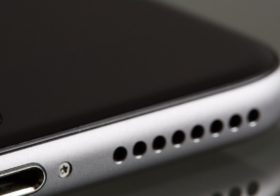Ten years on: the impact of the smartphone evolution on MiFID II compliance
It might be hard to believe, but the iPhone has been with us for ten years. First announced on the 9th June 2007, it was officially available on 29th June the same year. While initial reviews were not positive on how well the device performed as a phone, Apple’s continued innovation has led to the iPhone being one of the most popular gadgets of all time. The iPhone continues to be phenomenally popular, with more than 129 million devices sold so far in 2017.
The Markets in Financial Instruments Directive (MiFID) was implemented the same year, following the completion of the draft in 2004.
With the MiFID II compliance deadline coming into view, it’s worth looking at how the growth of smartphones has affected the compliance directive.
Can you hear me now?
One of the biggest changes in working habits is due to the power of the devices that we have available to us. In 2007, the number of smartphones shipped worldwide was around 115 million in total, according to industry analysis firm Canalys; this compares to an estimate of nearly 1.5 billion smartphones sold in 2016.
Worldwide, more people have smartphones than ever before and they now play a vital role in our business and personal lives. Under MiFID, recording calls from mobile devices could be navigated by writing company procedures that simply prohibited trading on mobile devices. Under MiFID II this is no longer the case – our reliance on smartphones and their overall practicality in business makes it simply impossible to prohibit use.
But as the regulations have moved on, so too has the technology, with network embedded solutions now enabling companies to very simply (and cost effectively) deploy call recording to their mobile fleets. This avoids costly and technically complex implementations. Put simply, with the right solutions now available to the market, and with heritage behind them, why wouldn’t you choose to implement a network level call recording solution?
Apps for everything
The most significant innovation in the iPhone (and of course Android since) was the release of the App Store (and Google Play, respectively). By making it incredibly easy to find, load and manage apps on the iPhone, people could personalise their devices and enable new connections to previously ‘mobile unobtainable’ content quickly. This opened up a huge new market for developers. Following on from its initial launch with 500 apps, the App Store now offers more than 2.2 million.
These apps help people to be more productive with their devices as well as providing more opportunities for communication wherever and whenever it’s needed. However, the rise of messaging application functionality within professional tools like LinkedIn, through to more consumer and personal services like WhatsApp and Facebook Messenger, means that maintaining compliance is more difficult. It’s a landscape that continues to evolve.
These services are often encrypted so that messages can’t be read or stolen, but this makes it impossible to effectively capture them for compliance. Services such as WhatsApp enhance the complexity further as you can now make calls over WhatsApp as well as sending traditional text-based messages.
When any personal channel can be used to discuss trades, compliance teams face a significant challenge. Can they allow these apps to be used, and run the risk of not capturing the necessary interactions with customers? The prevailing view is, of course, “no”. Many firms are opting to leverage their MDM solution to lock down the selection of apps to those that can be adequately monitored.
The changing face of technology and compliance
Looking back at ten years of the iPhone – and ten years of MiFID – the potential for smartphones has developed and evolved rapidly. The impact of that on compliance has been huge, and all firms involved in trading have to keep up with these changes.
To find out how we can help your business to stay ahead when it comes to MIFID II, get in touch.


